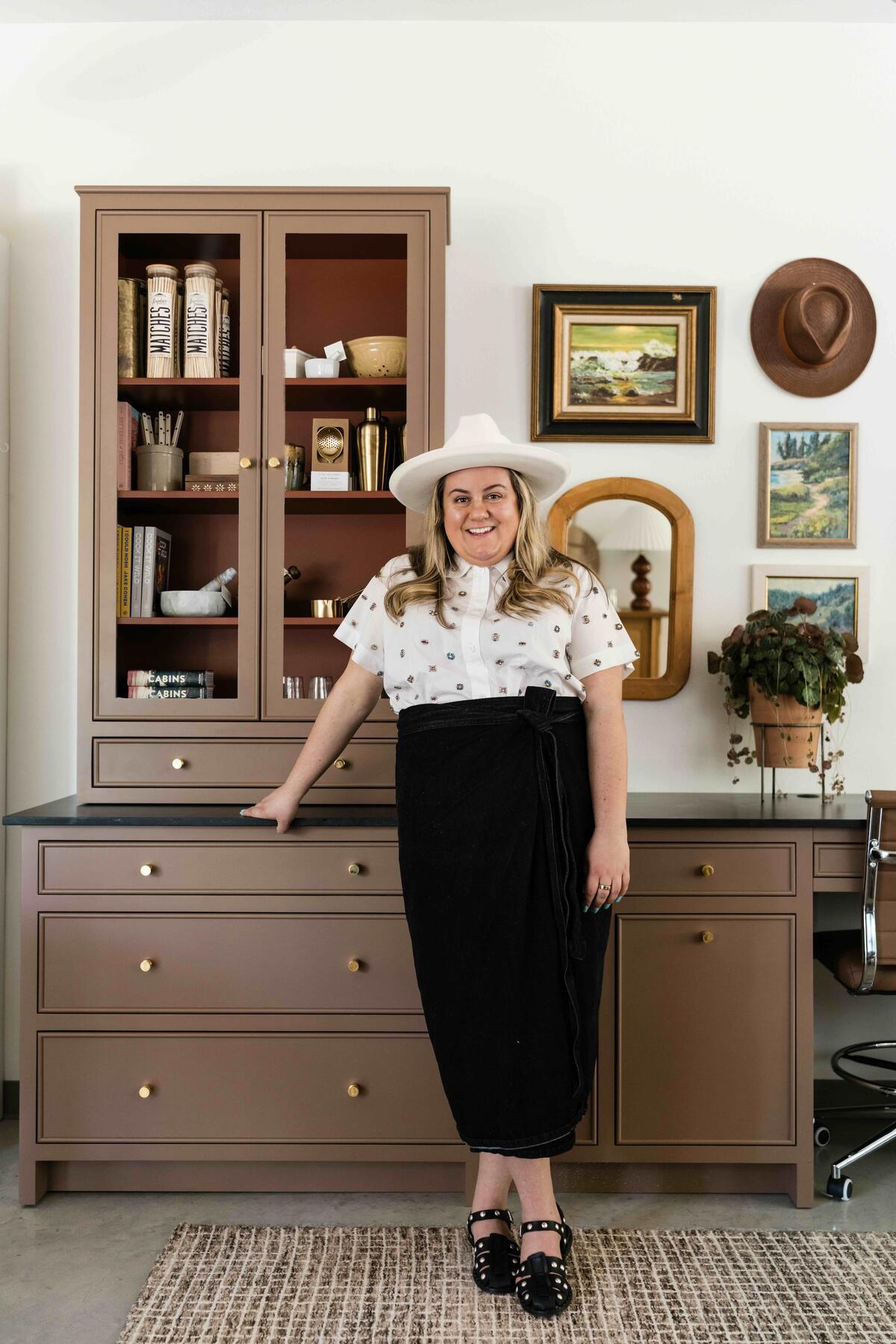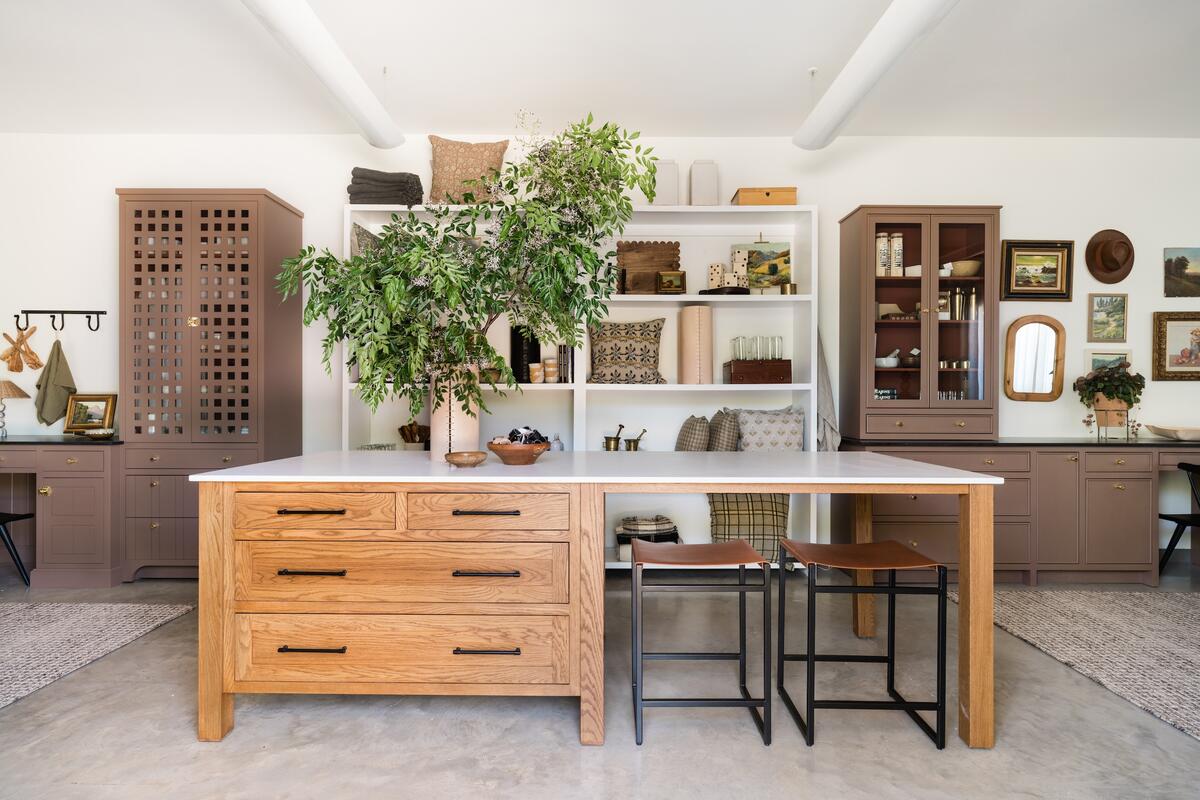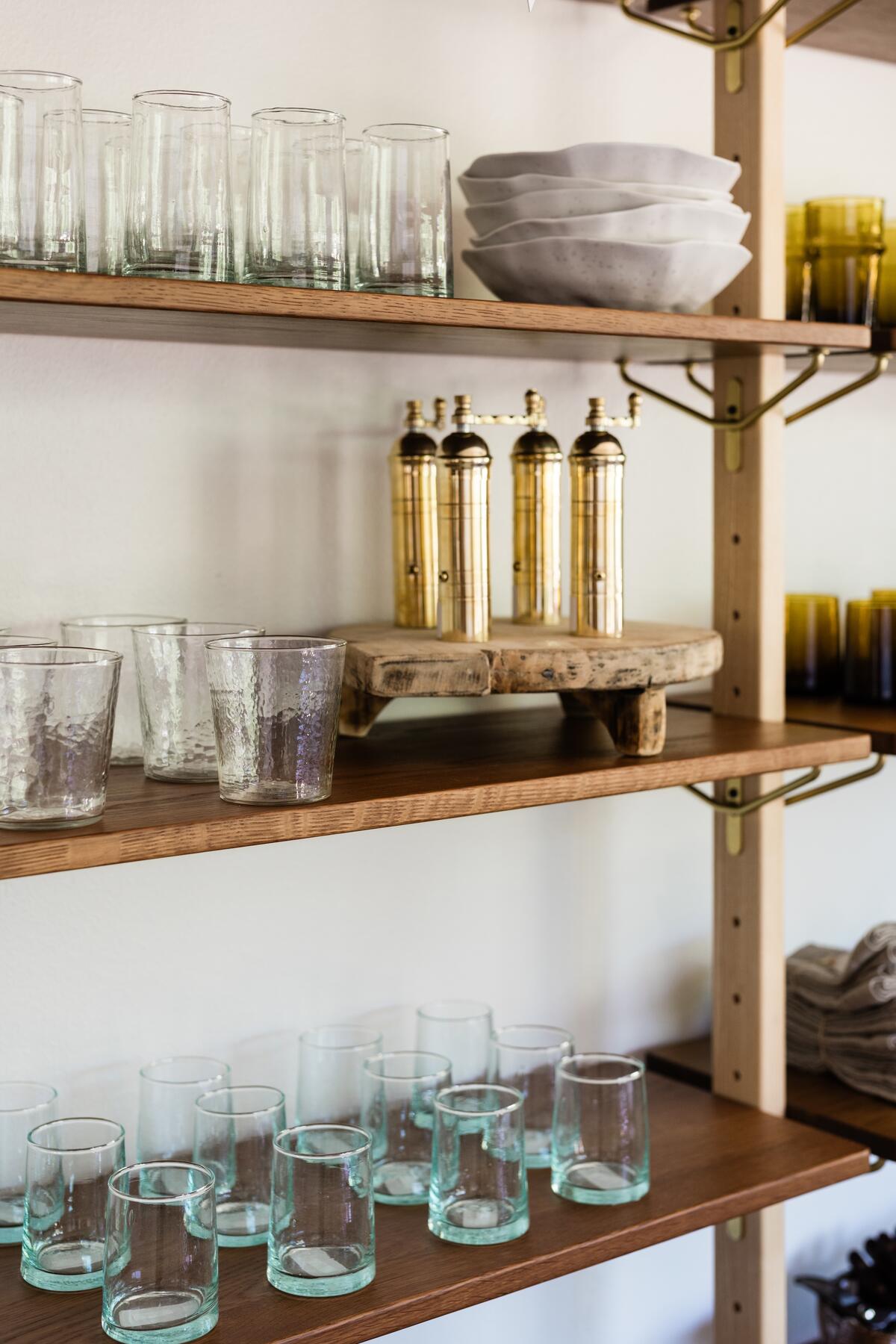In Business of Home’s series Shop Talk, we chat with owners of home furnishings stores across the country to hear about their hard-won lessons and challenges, big and small. This week, we spoke with Anastasia Casey, owner of the Austin showroom The Interior Collective.
Casey was born in San Francisco and bounced around the West Coast before moving to Austin in the fall of 2013 for what was meant to be a two-year work stint. “I’ve just never looked back,” says the entrepreneur, who also founded and runs IDCO Studio, a boutique creative agency that crafts branding and websites for interior designers. She also runs a design-focused podcast and editorial outlet, The Interior Collective.

In case she didn’t already have enough plates spinning, Casey spoke to BOH just days after bringing home a baby girl (no wonder the word exciting was a recurring theme in the conversation!). Ahead, she discusses “the prettiest brooms,” working with female-owned and ethically operated vendors, and the evolution of Austin’s trademark style.
What was your career like before the shop?
While I was still in school, I was working in commercial real estate, doing marketing for properties. I moved to Austin because I got hired as the director of marketing for a high-end luxury real estate company here, and that was awesome because I got to see inside of Austin’s most beautiful, prestigious, historic homes, which I never would’ve gotten to experience otherwise. That’s when I started to fall in love with homes.
After I was let go from that company, and we were very much living check to check, we needed to figure out a way to pay rent. I started IDCO Studio, making websites and branding, and eventually narrowed it down to just interior designer [clients] after a couple of years. We now have a team of 16 around the country and a beautiful office just around the corner from my house.
I really like working outside of my house, so it was important for me to keep the office, but when Covid hit, everybody wanted to work from home. The office was about 1,800 square feet, and I was the only one in it. I wanted to utilize the space better, and I was focused on how I could better serve our community of designers here in Austin, and how I could reach people who aren’t professionals but just design lovers. So we brought in products and turned it into a showroom.
What kinds of products do you specialize in?
We’ve focused on being the one-stop shop before a photo shoot or install—maybe it’s some vintage pieces, art for shelves, some throw pillows. We have amazing pottery. This is silly, but you had to go all over Austin to find a pretty broom. If you are shooting a mudroom and you need that perfect styling piece, I found the prettiest brooms we could possibly stock. It's all of those finishing pieces that make everyday life feel a little bit more special.
How would you describe the aesthetics of the store?
It’s my style. There’s nothing in there that I wouldn’t have in my own house, or hasn’t been in my own house. I think that it is unique to Austin, because for a long time [the city] was leaning into a modern, graphic, “a little bit Southwestern in a fun hipster way” vibe. That’s all we saw over and over again. Our shop is much more English-inspired. I like to say “English-inspired with Texas grit.” You’re going to get some floral pillows in there, and refined, upholstered pieces and vintage oil landscapes and still-lifes, but then there’s also a lot of modernity and functionality to it. I love chunky metal pieces, nubby fabrics, vintage leather. It’s a combination.
It sounds like it’s geared to the trade, but who is your typical customer?
We do pop-up events where we bring excess inventory out front, and those end up being fun community days where the general public is shopping. But on a weekly basis we’re probably talking 75 percent trade.
Tell me about your sourcing process. Is it true that all of your newly sourced items are from a female-owned, an ethically sourced, or a sustainable business?
We are paying for this space whether we use it for retail or not, so I don’t have the same urgency to turn over products the way that a traditional brick-and-mortar would. I want [the product array] to be special. It started from me thinking, “What am I sourcing for my own house? What do I keep needing to drive around town to find when I’m doing a photo shoot?” And then, in full transparency, [online sourcing platform] Faire makes it easy to just set filters. You have to do a little bit more digging with the vendors beyond that, because I don’t know if those vendors are sourcing products from somewhere else. I’ve also taken it a step further and worked directly with makers.

Why was that important to you?
It was important in my own personal home, which we finished up about a year ago, because IDCO is a female-owned and -run business, and I’ve built it around allowing the girls on my team to be stay-at-home moms who also have a very lucrative, creatively fulfilling career. I couldn’t imagine pulling product that didn’t also follow that same ethos. It just seemed like a nonnegotiable.
Tell me about a favorite vendor.
I love working with Piglet in Bed. Piglet does beautiful bedding and linens in England. I had sourced them for two of my own houses before, and they’re my very favorite duvets and sheets. I’m excited and honored to get to carry that. I also carry Carley Summers’s furniture line, which she’s doing with River & Bord. It’s nice to have pieces that are designed and made by my friends.
Is there a certain object that flies out the door?
What’s been doing really well are these Amish-made dustpans that are actually for your fireplace; they’re walnut and black leather, just gorgeous pieces of art, but they’re so functional. I usually order ’em in pretty small batches—we’re getting six at a time—and as soon as they’re on the floor, they’re gone.
What about your own favorite category?
It’s so fun sourcing the vintage stuff, because it means that there’s an actual purpose to my hoarding. But also, vessels. In another life, I would be a florist, so to have beautiful vessels that make a floral arrangement come to life is so exciting to me. And I love, love, love vintage lighting. Vintage lamps make any room cooler.
Do you have an e-comm program, or do you plan to build one?
It’s so interesting because [the other aspect of my career is] building e-comm sites for designers all the time, but we have not gone into e-comm for our shop because I know the logistical challenges that I face with our clients as we’re building their websites. I definitely would never say never. My audience [on social media] is very much not Austin-based—it’s probably only 7 or 8 percent. Then we have tons of followers all over the world, and we get questions all the time about stuff that they see in the shop. We’re always happy to ship things to people when they ask, but making it a more seamless experience is in the one-to-two-year plan.

You have plenty going on, but what are some of your other plans and dreams for the retail business?
I was actually just working on manifesting some stuff for the new year, and I want to ramp up our community experiences. I’m excited to start something called Supper Club, a once-a-month event in the shop. It may involve dinner, it may not. We’re either doing a floral-arranging class, or learning to make nonalcoholic spirits—things that let you explore your creativity a little bit and connect with people.
What’s the Austin design scene like?
First and foremost it is super welcoming and kind. That’s true of the creative field as a whole in Austin. When I got here 12, 13 years ago, it was very Southern and very traditional, and that has definitely changed. It went from super traditional to that modern, eclectic West Elm–y vibe to what it’s transforming to now, which is a lot more rich textures and color and layers but still with a cowboy feel. Austin has grown, so there are more and more suburban neighborhoods popping up, and it’s exciting to see designers here helping add a lot of character to those tract homes.
Are you still feeling the rush of people moving to the area?
We were booming for so long, and then the market dropped last year. Right now, I think people are waiting things out. That’s probably true around the country, but in Austin specifically, people are remodeling like crazy. The need for that kind of design work is through the roof. More and more people want to be in central Austin, but there are only so many homes in central Austin, so how can they create what they want in the space they already have?
What are your favorite days as a shop owner?
Definitely pop-up shops, when we bring in a couple of other business owners who have stuff I haven’t seen, or they’re just in a different category. It’s the best kind of networking—and a great sales day too.





























